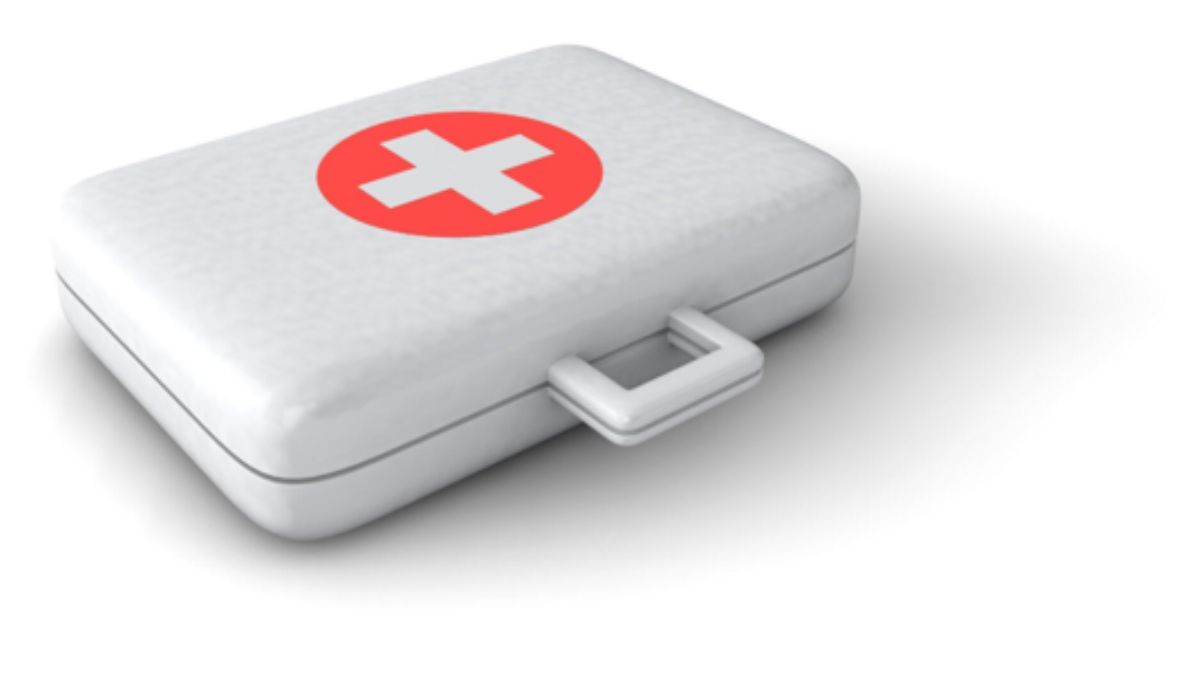HEALTH
Eye-Opening Habits: Daily Practices for Better Vision

Importance of Regular Eye Exams
Eye exams can help detect vision problems early, which is vital for effective treatment. Adults should have their eyes checked at least every two years, while children and seniors may need more frequent visits. Regular check-ups ensure that any potential issues, such as refractive errors or eye conditions like glaucoma and cataracts, can be addressed promptly by a qualified eye care professional. Comprehensive eye exams can detect other health issues and identify vision impairments. Conditions such as diabetes, high blood pressure, and even certain types of cancer can manifest visible symptoms within the eyes. By attending routine eye exams in KS Family Optometry, individuals can catch these serious health concerns early and seek appropriate treatment. This proactive approach to eye care preserves vision and enhances overall health and well-being.
Maintaining Healthy Vision Habits
Developing and maintaining healthy vision habits can significantly reduce the risk of eye problems. Simple actions like taking regular breaks from screen time, ensuring proper lighting while reading, and avoiding rubbing the eyes can make a substantial difference. Engaging in physical activities can promote overall health, which benefits eye health. For instance, activities that increase cardiovascular health can improve blood circulation to the eyes, providing essential nutrients and oxygen. Washing hands before touching the eyes is also necessary. It reduces the risk of infections like conjunctivitis. In addition, proper eyelid cleansing can prevent blepharitis, a condition marked by inflammation of the eyelids that causes irritation and discomfort. Instilling these habits early, especially in children, can foster a lifetime of good eye health practices.
Recognizing Common Eye Conditions
Understanding common eye conditions is essential for early diagnosis and treatment. Conditions like myopia (nearsightedness), hyperopia (farsightedness), astigmatism (irregular curvature of the cornea), and presbyopia (age-related difficulty in seeing close objects) are relatively common. Prescription glasses or contact lenses effectively manage these conditions by correcting the refractive error and improving vision clarity. More severe conditions like glaucoma, cataracts, and macular degeneration require prompt medical attention and ongoing management. In glaucoma, elevated pressure in the eye harms the optic nerve, causing a decrease in vision. Routine eye exams help detect glaucoma early since symptoms may not appear until the damage is severe. Surgery can effectively manage cataracts when caught early, as they involve lens clouding.
Benefits of Wearing Sunglasses
Wearing sunglasses makes a fashion statement and offers essential protection against harmful UV rays. Long-term exposure to UV radiation can lead to severe eye damage, including cataracts, photokeratitis, and macular degeneration. Choosing sunglasses with adequate UV protection is vital for maintaining long-term eye health. Besides shielding against UV rays, sunglasses also minimize glare, which is especially helpful while driving or engaging in outdoor pursuits. Glare reduction can enhance visual comfort and performance, making it easier to see clearly in bright conditions. Polarized lenses are highly efficient in minimizing glare from reflective surfaces like water and snow, offering extra protection for those who enjoy outdoor activities.
Nutritional Tips for Eye Health
Consuming a diverse diet with specific nutrients can enhance eye health. The American Academy of Ophthalmology recommends leafy greens, fish, nuts, and fruits for optimal eye health. Lutein and zeaxanthin are antioxidants that safeguard the eyes from harmful light. Green leafy vegetables and eggs are sources where they can be located. Vitamins C and E, found in citrus fruits, nuts, and seeds, help protect the eyes from oxidative damage.
Using Digital Devices Smartly
Extended use of digital gadgets may cause digital eye fatigue, identified by issues like dry eyes, headaches, and vision blurriness. Following the 20-20-20 guideline is beneficial, as it includes pausing for 20 seconds every 20 minutes to gaze at something 20 feet away, which can assist in reducing these symptoms. Additionally, using screen filters and adjusting the brightness can reduce eye strain. Setting up an ergonomic workstation can also prevent digital eye strain. Be sure to place the computer screen at a distance of one arm’s length and slightly lower than eye level. Set the lighting to reduce glare on the screen, and sit in an adjustable chair to keep your posture correct. These simple adjustments can significantly reduce eye discomfort and improve productivity.
Protecting Eyes During Sports
Sports-related eye injuries are relatively common but can often be prevented with appropriate protective eyewear. Sports such as basketball, baseball, and racquetball pose significant eye risks, making wearing goggles or helmets with face shields essential. Ensuring proper eye protection can prevent severe injuries and maintain good vision health. Protective eyewear should be made of polycarbonate material, which is impact-resistant and provides robust defense against potential injury. Prescription sports goggles are available for individuals who require prescription lenses. Additionally, educating athletes, especially children, on the importance of eye protection can instill lifetime habits that prioritize eye safety during sports activities.
When to Consult an Eye Specialist
Knowing when to consult an eye specialist is crucial for maintaining eye health. Any sudden changes in vision, persistent discomfort, or symptoms like flashes of light, floaters, or severe headaches should prompt a visit to an optometrist or ophthalmologist. Early intervention can prevent many severe eye conditions from progressing. Frequent appointments with an eye doctor are crucial for people with diabetes or hypertension, as these conditions can lead to serious eye problems. Moreover, individuals with a family history of eye diseases should be particularly vigilant about their eye health and seek regular check-ups to monitor potential issues.
HEALTH
What You’ll Learn in CPR & First Aid Training Courses

Have you ever wondered what you would do if someone collapsed in front of you or had a serious injury? It’s a scary thought, but being prepared makes a huge difference. CPR & First Aid training courses teach you exactly how to handle emergencies like this.
In this blog post, you’ll discover what skills you’ll learn, how these courses work, and why this training is so important. By the end, you’ll feel ready to take the next step toward saving lives.
Learn to Act Fast in Emergencies
One of the first things you’ll learn in CPR & First Aid training is how to stay calm when an emergency happens. These courses show you how to think clearly and take action when seconds matter. Whether someone has trouble breathing, is bleeding badly, or has passed out, knowing what to do right away can help save their life.
You’ll learn how to assess the situation, check for danger, and start helping before professionals arrive. These steps can make all the difference.
Discover the Power of CPR
CPR stands for Cardiopulmonary Resuscitation. It sounds complicated, but you’ll learn that it’s easy to do. CPR is a method used when a person’s heart stops beating.
You’ll find out how to push down on the chest in a steady rhythm and how to give breaths if needed. These actions help move oxygen through the body until help comes. CPR is a lifesaving skill, and anyone can do it once they are trained.
Understand How to Use an AED
An AED is a device that gives a shock to the heart to help it start beating again. During your training, you’ll learn how to use it step by step. The machine talks to you and tells you what to do, which makes it easier.
You’ll also learn where to find AEDs in public places and why quick use is so important. Using an AED right away can increase a person’s chances of survival, and you’ll be ready to do just that.
Learn to Handle Common Injuries
Every day, accidents happen all the time. Someone might cut themselves, fall, or have a burn. In CPR & First Aid training, you’ll learn how to help with these injuries.
You’ll find out how to clean and cover a wound, treat a burn, or wrap a sprain. You’ll also learn what not to do so you don’t make things worse. Knowing how to give the right care right away helps someone feel better and heal faster.
Be Ready for Choking and Allergic Reactions
Choking is another emergency that can happen suddenly. These courses show you how to spot the signs and what to do to help. You’ll learn how to perform back blows and the Heimlich method.
Allergic reactions can also be dangerous. You’ll learn how to use an epinephrine auto-injector and how to help the person stay safe until help comes. These are real situations that anyone could face, and now you’ll know what to do.
If you’re curious about even more topics covered in these lessons, get more info by visiting your local training center or health organization.
First Aid Training: The Power to Save Lives
Taking CPR & First Aid training courses gives you the skills to help others during some of life’s scariest moments. You don’t need to be a doctor or nurse. Just knowing what to do during an emergency can save lives.
These courses help prepare you for real-life emergencies in a simple, hands-on way. Did this guide help you? Browse the rest of this section for more advice on a variety of topics.
HEALTH
The Role of Community in Veteran Health and Wellness

Did you know that a strong community connection can play a transformative role in the health and wellness of our veterans? In recent years, studies have shown that social integration significantly boosts mental health and overall well-being, especially for those who have served in the military.
Veterans often face unique challenges, and having a supportive community can be a crucial factor in their recovery and sustained health. This article explores the vital importance of a community in veteran health and how senior living options can enhance their overall quality of life. Keep on reading.
The Importance of Community in Veteran Well-Being
For veterans transitioning back into civilian life, the shift can often feel overwhelming. Many struggle with feelings of isolation and alienation from those who haven’t shared similar experiences. This is where a sense of community becomes essential.
A supportive network helps veterans feel connected and valued. In senior living environments, fostering a community spirit can lead to:
A Sense of Belonging
Veterans often feel better when they know others share their past. Living with peers who understand can make them feel safe. This helps build real friendships and trust.
Improved Mental Health
Being around others can ease sad or anxious thoughts. Talking, laughing, and sharing stories helps the mind. These small moments lift spirits each day.
Physical Health Benefits
Group activities like walks or games keep the body moving. Staying active with others can be more fun. It helps veterans stay strong and feel better.
Easy Access to Resources
A strong group can guide members to helpful tools. It’s easier to ask for help when others understand. Veterans find what they need without feeling lost.
How Senior Living Enhances Social Connections
Many places where seniors live are made to feel like a strong community. Some have special programs just for veterans. These programs help them feel supported and connected with others.
There are group trips, fitness classes, and other fun things planned for veterans. These keep them busy, happy, and moving. It also helps them meet people who understand them.
Some places also give extra care for mental health. Veterans can talk to people who know about things like PTSD. Being around others with similar stories can help them feel less alone.
Building Supportive Care Frameworks
Supportive care is more than just meeting physical needs; it’s about holistic wellness that encompasses emotional, mental, and social aspects. Within a community-focused approach, veterans can tap into:
- Peer support groups
- Integrative wellness programs
- Access to healthcare
The Unique Proposition of Community-Focused Senior Living
Choosing a senior living arrangement that emphasizes community focus provides veterans with the unique opportunity to enhance their quality of life. Not only can they maintain independence, but they can also engage in a variety of activities designed to foster relationships and an active lifestyle.
Facilities that prioritize a community focus in veteran health often include programming tailored specifically for them. They offer more than just a place to live. Veteran programs for seniors create a supportive atmosphere promoting veteran wellness through engagement, shared experiences, and friendship.
Invest in Your Health and Well-Being Today!
If you or a loved one is a veteran looking for a welcoming community, consider exploring options that offer comprehensive support and a vibrant community in veteran life. With a focus on wellness and connection, you can conquer the challenges of daily living and thrive among peers who understand and appreciate your journey. Your health and well-being deserve a community that cares.
For more related topics, check out the rest of our blog!
HEALTH
How Cannabis Extracts are Redefining Medical Applications

How can one plant help with so many health needs?
Cannabis extracts are now used in new ways to treat different medical problems. These extracts come in forms like oils, drops, and pills. Many people use them to feel better without strong drugs.
Doctors and patients are starting to see the value of these products. They are easy to use and made with care. If you’re looking for new ways to feel better, cannabis extracts might be worth a try. Want to learn more about how they work and how they can help? Keep reading!
Managing Pain
Many people deal with pain each day, and finding safe ways to manage it matters. Cannabis extracts are giving new hope by offering support for pain that doesn’t always respond to common treatments.
These extracts may help with joint pain, nerve pain, and pain from injuries. They work by interacting with the body’s systems in a natural way. Unlike some strong drugs, they are less likely to cause harm with long use.
Doctors are now looking at these extracts as a helpful tool for people with ongoing pain. As more studies are done, more is learned about their benefits. To stay informed about growing options for care, reading articles like these can help guide smart choices.
Helping with Sleep
Trouble falling asleep or staying asleep can affect daily life. Cannabis extracts are now being used to support better sleep by helping the body relax at night. Some people say they fall asleep faster and wake up less often.
These extracts may work by calming certain parts of the brain that stay active during rest. Many users prefer them over common sleep aids because they feel more natural. They are often taken as drops or capsules before bedtime.
People who have tried other sleep methods without success are now turning to this option. As more is learned, cannabis extracts may become a trusted part of nightly routines. For those hoping to wake up feeling more rested, they could be a step toward better sleep.
Easing Anxiety and Stress
Busy days and constant pressure can lead to feeling overwhelmed. Cannabis extracts are now being used to help ease anxiety and lower stress levels. Some people say they feel calmer and more balanced after using them.
These extracts may work by helping the brain respond better to stress signals. They are often taken in small amounts during the day and may support a more peaceful state of mind in daily life.
Supporting Appetite and Nausea Relief
Feeling sick or not wanting to eat can make recovery harder. Cannabis extracts are now being used to help reduce nausea and improve appetite. This can be helpful for people going through treatments that make eating difficult.
The extracts may work by calming the stomach and making food seem more appealing. They are often taken in small doses and come in easy-to-use forms. For some, they offer simple support during times of low appetite or queasiness.
Exploring New Paths with Cannabis Extracts
Cannabis extracts are opening new doors in medical care, offering support in ways that were once hard to find. From easing daily struggles to helping with serious health challenges, these extracts are changing how treatment can look and feel.
Their growing use shows how natural options are becoming part of trusted care plans. As research continues, more people may find comfort and balance through these products. Exploring new paths with cannabis extracts in modern care shows how far healing can go.
Did you find this article helpful? Visit our website for more awesome content like this.
-

 HEALTH1 year ago
HEALTH1 year agoIntegrating Semaglutide into Your Weight Loss Plan: A Practical Guide
-

 HOME IMPROVEMENT1 year ago
HOME IMPROVEMENT1 year agoHow to Choose the Perfect Neutral Area Rug for Every Room
-

 LAW1 year ago
LAW1 year agoPost-Divorce Considerations in California: Modifications and Long-Term Planning
-

 LAW1 year ago
LAW1 year agoTeenage Drivers and Car Accidents in California: Risks and Parental Liability
-

 CONSTRUCTION1 year ago
CONSTRUCTION1 year agoConstruction Site Safety Regulations in New York and Your Rights as a Worker
-

 FINANCE1 year ago
FINANCE1 year agoDigital Asset Management in Florida Estate Planning
-

 LAW1 year ago
LAW1 year agoKentucky’s School Football: Concussions, Injuries, and Legal Options
-

 LAW1 year ago
LAW1 year agoGang Activity and Criminal Charges in CA: Protecting Your Rights
